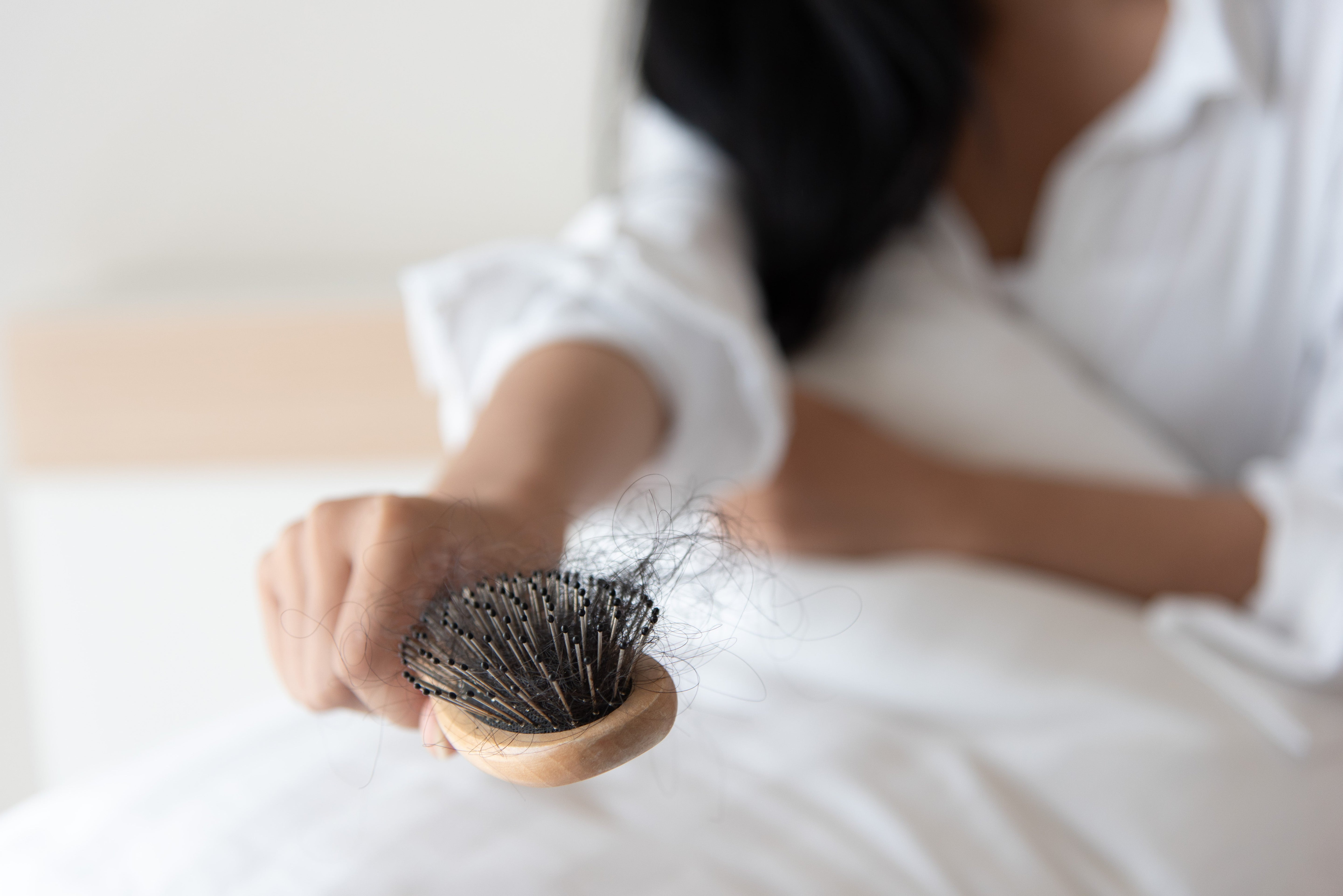That ultra-sleek, glossy finish you get after a salon blowout? The one that feels almost too good to be true? Often, it is.
The shine and silkiness are usually thanks to silicones - synthetic ingredients found in most shampoos, conditioners, and styling products. They act like a quick-fix topcoat: your hair instantly feels smoother, shinier, and frizz-free. But behind the surface lies a long-term trade-off - buildup, blocked hydration, and hair that slowly stops responding to care.
What Are Silicones?
Silicones are man-made polymers created from silicon, oxygen, carbon, and hydrogen. In haircare, they are used to:
-
Add a glassy, mirror-like shine
-
Smooth and seal frizz
-
Lock in (or rather, lock down) moisture
-
Create easy detangling and slip
You’ll find them in familiar names like Dimethicone, Cyclopentasiloxane, Amodimethicone, and Trimethicone.
They’re especially common in products that promise "shine," "damage repair," or "frizz control." The irony? The very ingredients used to "fix" your hair are often the ones quietly undermining its long-term health.
The Hidden Problem With Silicones
Silicones are surface workers. They don’t heal or strengthen from within. Instead, they wrap the hair shaft in a smooth, water-resistant coating. That coating:
-
Traps residue, product buildup, and even pollutants
-
Prevents real hydration and nutrients from entering the hair
-
Creates brittle, dry strands under the illusion of sleek shine
-
Weighs hair down, leaving it limp or greasy
-
Can clog follicles, disturbing scalp balance and healthy new growth
Most people don’t notice at first. For weeks or months, the hair looks amazing. Then slowly, it starts to feel dull, lifeless, unmanageable. That’s silicone buildup at work.
The Damage Repair Trap
Here’s where it gets sneaky. Once the damage starts showing - dryness, breakage, frizz - what do most people reach for? More "repair" products.
The problem is: most conventional repair products are loaded with the exact same ingredients causing the damage.
Think about it:
-
Silicones cover up dryness with a glossy film.
-
Sulfates (like SLS and SLES) strip the hair to remove that film.
-
Drying alcohols leave hair even more brittle.
-
And then - surprise - the next step is another silicone-heavy serum to smooth it all down again.
This creates a self-perpetuating cycle:
Instant shine → buildup → dryness and damage → more "repair" products → even more buildup.
It’s the beauty industry’s quiet little loop: hair kept in a constant state of needing rescue, with products that never truly solve the problem. The worse your hair feels, the more you buy.
Can You Break the Cycle?
Yes - but it takes a reset.
Silicone buildup doesn’t rinse out with gentle washing. It often requires strong cleansers like Sodium Lauryl Sulfate (SLS), Sodium Laureth Sulfate (SLES), or Olefin Sulfonate to strip the coating away. But those same cleansers can also strip natural oils, leaving your hair dry, rough, and your scalp irritated.
A better approach is consistency with natural, silicone-free products. With patience, your hair can detox and rebalance itself. Gentle clarifiers like:
-
Apple Cider Vinegar
-
Soapberry (Reetha)
-
Shikakai
-
Mild plant-based surfactants (like Coco-Glucoside, Decyl-Glucoside)
…can help lift residue without damaging the delicate cuticle.
Our Sweet Orange Oil Balancing & Hair Strengthening Shampoo blends Reetha, Shikakai, and plant-based surfactants to break down buildup while nourishing the scalp - no harsh stripping, no fake shine, just fresh, balanced hair.
Final Thoughts
Silicones give you that instant "wow" factor - but it comes at a hidden cost. They don’t repair; they disguise. They don’t hydrate; they block. And unless you regularly clarify, they quietly build up until your hair feels weighed down and starved of real nutrition.
That’s why the EU is already phasing out certain types of silicones by 2027. Yet in Australia and the U.S., they remain widespread - even in products marketed as “natural” or “repairing.”
Healthy hair doesn’t need disguises. When it’s truly nourished from the roots and cared for with gentle, natural ingredients, it shines on its own. Not with a coating, but with genuine vitality.
The secret to salon-smooth shine isn’t a silicone - it’s a scalp and strand routine that feeds your hair instead of masking its needs.

